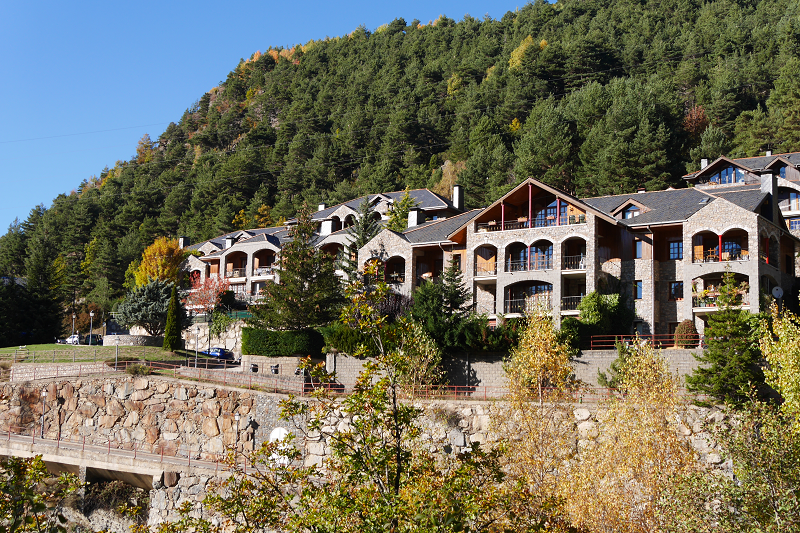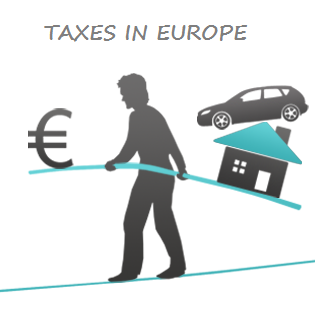How and who will pay income tax in Andorra in 2016 and later?
Tax on income of individuals (income tax)
1. What is a tax on income of individuals (IRPF)?
Income tax (IRPF) is a tax levied on income received by individuals having the status of a tax resident in the territory of Andorra. Income tax is levied on all types of taxable income, regardless of the source, the place of receipt and registration of the payer.
In other words, all the income obtained by the taxpayer shall be taxable.
A taxpayer is any individual who:
– lives more than 183 days in the territory of Andorra (Pyrenees) during the calendar year;
– directly or indirectly exercises in Andorra and its economic activity has economic interests and profit here.
Near-border workers daily arriving to Andorra from Spain or France, hired by companies, firms and enterprises that are tax residents in Andorra are not considered tax resident in Andorra.
Revenues that border and seasonal workers receive are taxed on the income of non-residents, despite the fact that the latter may choose application of special scheme of payment of the same tax. This scheme allows them to pay taxes in accordance with the general rules established by the Income Tax Act.
2. What taxes are subject to income tax (IRPF)?
Taxable income is defined and measured according to their type and origin.
| Tax base of income tax | |||||
| Common base | Base of savings | ||||
| Income from work activity | Income from real estate | Income from economic activities | Income from movable property | Increase and decrease in capital | |
2.1 INCOME FROM WORK ACTIVITIES
Any monetary compensation resulting from the employment relationship (i.e. wages).
2.2 INCOME FROM REAL ESTATE
Income from the operation of real property or rights to such property (e.g. rental properties).
2.3 INCOME FROM ECONOMIC ACTIVITIES (unchanged)
Same income that until 2014 were taxed on economic activities (e.g. business or professional activity).
2.4 INCOME FROM MOVABLE PROPERTY
Income received from an ancestral capital, assets, property or rights to not related to real property (e.g. insurance payments and compensations).
2.5 GAIN AND REDUCTION OF CAPITAL
Income obtained as a result of change in composition of assets. Non-repayable acquisition (inheritance, donations, etc.)and income received from real estate transfer, subject to tax on income from the transfer of ownership of real property received in Andorra, are beyond the scope of application of income tax. (WITHOUT CHANGES)
3. Elements determining a tax
The following types of reducing the tax base exist:
3.1 GENERAL BASES
| Minimum per person | 24,000 EUR per a taxpayer with the ability to increase up to 40 000 EUR in case of unemployed spouses (proportionally) |
| Minimum per family | 750 EUR per year for ascendants and descendants who are dependent (multiplied by 1.5 in case of disability) |
| Living area, accommodation | Minimum 1,000 EUR per month |
| Contributions to pension fund | A maximum annual amount is a minimum amount of 5,000 EUR or 30% from income from labor and economic activities |
| Child support or annual living wage | An amount set in accordance with current Civil Code, court order or regulating agreement |
3.2 BASES OF SAVINGS
| Minimum per person | 3,000 for a taxpayer |
In addition, there are certain deductions and allowances that reduce an actual taxable base and allow to avoid double taxation: i.e. payment of domestic taxes and taxes of other countries , and, in the case of economic activities, deductions in case of investment and when creating new jobs.
4. Applicable tax rate
The rate of income tax (IRPF) is 10%. However, incomes in the amount of 24,000 to 40,000 are taxed at the rate of 5%, which is applied to the tax rate by the maximum allowance of 800 EUR to receive certain income.
5. Period for payment
A taxpayer is obliged to submit a tax return for the period from April 1 to September 30 of the following tax reporting period.
Individuals receiving only income from employment or capital gains that have been withheld or are not subject to taxation do not submit a declaration.
6. Withholdings and income from interest on deposits
Payers of labor and investment income shall make appropriate retention and transfer them to the ministry responsible for finance.
6.1 LABOR INCOME RESULTING FROM WORK ACTIVITIES
Tax and Customs Board determines the percentage of a withholding corresponding a labor income. This percentage is calculated taking into account the reductions of allowances and compensations for which the taxpayer is entitled. For this reason, both the payer of income, and the taxpayer shall provide relevant data in this regard.
(RETENTION SHALL NOT BE MADE FOR THE NET PROFIT UP TO 24,000 EUR)
6.2 Income from capital gains (investment income)
As a rule, a fixed percentage of withholdings equal to 10% is applied.
There is a possibility of rate cuts when receiving investment income, identifying the account to which it relates (special account).
7. Regulation of withholdings from labor income
At the end of the year until March 31 of the following period, the Tax and Customs Board regulates the established withholdings on labor income and establishes the payment of tax. Application of withholding in 2015 to labor income
8. From January 1, 2015, employers and other payers of labor income are obliged to make a corresponding deduction from income to the ministry responsible for finance, via CASS (Caixa Andorrana de Seguretat Social).
Initial procedure for calculating withholdings from labor income
In 2015, a payer of income applies a withholding rate, in accordance with the table of approved by the tax regulations on income tax payment (IRPF).
| AMOUNT OF INCOME | ||
| Income for 2014 | % of withholdings | |
| from 0,00 EUR to 27,000.00 EUR | 0.0 % | |
| from 27.000.01 EUR to 30,000.00 EUR | 0.5 % | |
| from 30,000.01 EUR to 40,000.00 EUR | 1.0 % | |
| from 40,000.01 EUR to 50,000.00 EUR | 2.0 % | |
| from 50,000.01 EUR to 60,000.00 EUR | 3.0 % | |
| from 60,000.01 EUR to 70,000.00 EUR | 4.0 % | |
| from 70,000.01 EUR to 80,000.00 EUR | 4.5 % | |
| from 80,000.01 EUR to 90,000.00 EUR | 5.0 % | |
| from 90,000.01 EUR to 100,000.00 EUR | 5.5 % | |
| from 100,000.01 EUR to 120,000.00 EUR | 6.0 % | |
| from 120,000.01 EUR to 150,000.00 EUR | 6.5 % | |
| from 150,000.01 EUR and more | 7.0 % | |
– Retention rate is determined depending on the income received by the taxpayer during 2014.
– During 2015, taxpayers have the opportunity to request the regulation of this initial retention. You must report your financial data on income to be received during 2015, along with your personal data, to be eligible for this regulation.
– A taxpayer is not required to provide his personal and financial data, if his net income is less than 24,000 EUR.
See also Living in Andorra
See also Andorra business guide
See also Andorra company formation










